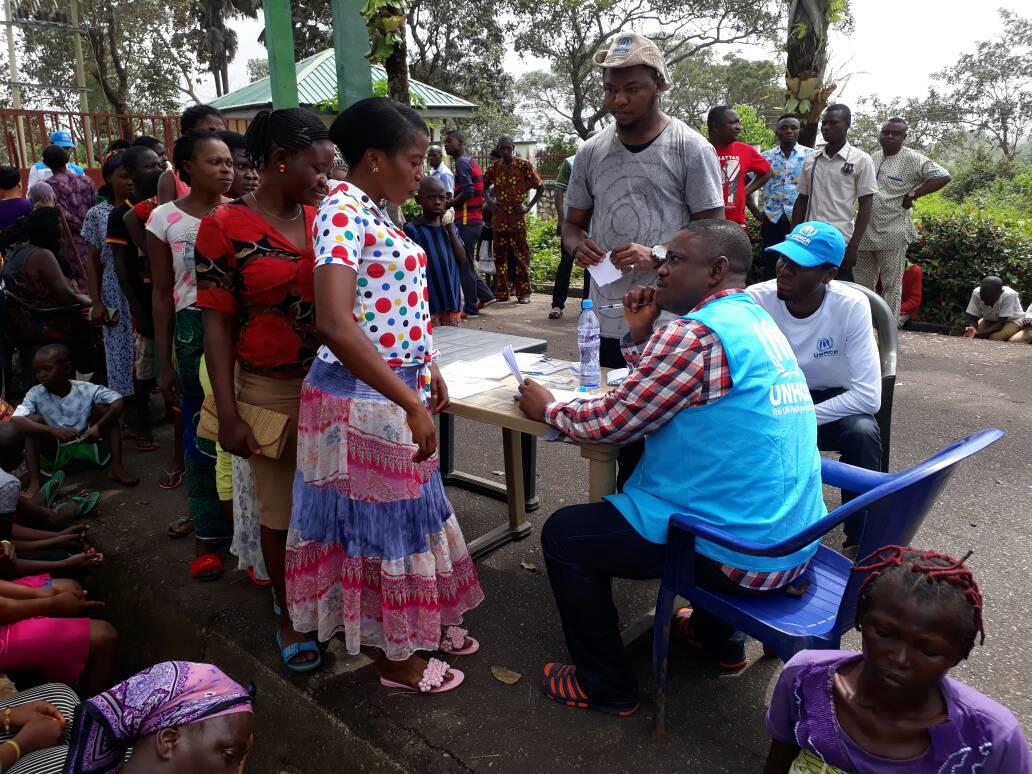Countdown for Angolan repatriation
Countdown for Angolan repatriation

LUANDA, Angola, March 23 (UNHCR) - The UN refugee agency's largest operation in southern Africa - the repatriation of Angolan refugees from camps and settlements in the region - is drawing to a close in a few months. By the end of October, virtually all refugees should have returned and UNHCR convoys and airlifts will stop.
More than 300,000 Angolans have returned home since 2002, either on UNHCR convoys and airlifts or by themselves. Upon arrival, the returnees receive a UNHCR reintegration package with basic non-food items such as a kitchen set, plastic sheeting, building materials and agricultural tools as well as two months' food rations from the World Food Programme.
"We plan to repatriate another 53,000 Angolans during the next seven months. After that, the three-year period of assisted repatriation will be concluded. As of 2006, UNHCR will not provide transport but we will still offer repatriation packages for those who return spontaneously," says Annette Nyekan, UNHCR's Acting Representative in Angola.
The only exception will be a group of 3,000 refugees in the Republic of Congo who have not yet decided to repatriate. Most of them originate from the Angolan enclave of Cabinda where preparations for return are still underway.
As in all major repatriation operations, a residual group might decide not to return home for various reasons. "These individuals are usually locally settled and well integrated in their countries of asylum," says Nyekan.
Will UNHCR run out of business in Angola in 2006? José Samaniego, who heads the agency's Angolan Programme Unit, replies with a laugh: "Our programmes here are increasing. We are shifting the focus from bringing people back home to making their return sustainable."
The UN refugee agency's strategy for the return of refugees to their home country is known as the 4Rs: Repatriation, Reintegration, Rehabilitation and Reconstruction. "The first R is nearly done, now we are concentrating on the other three," says Samaniego.
This is a challenging task in a vast country that has seen three decades of war and destruction. Most of the refugees are returning to isolated and remote areas in Moxico, Cuando Cubango, Zaire and Uíge, which were the four provinces most affected by the war.
UNHCR's operational budget reflects the change in activities. This year, US$10 million is being divided evenly between repatriation activities and general reintegration, whereas in 2006 the bulk of the budget will be allocated for reintegration projects. "We need to assist the population of those areas which are most affected by refugee returns," says Samaniego.
Returning refugees often find themselves in a difficult situation. Large parts of the country are littered with landmines. The infrastructure has been destroyed by the war, basic services are lacking and job opportunities are scarce.
UNHCR's policy for 2006 will help to bridge that notorious relief-development gap which regularly occurs in post-conflict situations as relief funds dry up but development aid is not yet forthcoming.
The UN refugee agency is pursuing innovative ways for its reintegration, rehabilitation and reconstruction activities. Currently, a UNHCR technical expert is closely working with the Angolan government and liaising with other UN agencies and donors to develop a reintegration framework for key areas of return.
Planning is done in a three-step process: Once the needs are identified by the ministries and UNHCR, projects are developed locally. The local administration and the sobas (traditional leaders) of the area are involved to make sure that the plans really meet the needs of the population. Only then are the donors asked for funding.
There is a wide range of UNHCR-supported projects covering water/sanitation, health, education, income generation, road repairs and many others.
While UNHCR is concentrating its efforts more and more on that post-return phase, the repatriation clock is counting down. Convoys from Kisenge in the Democratic Republic of the Congo to Moxico province began in March for approximately 2,100 refugees and should be completed by the end of April.
As soon as road conditions permit, repatriation could also start from Bas-Congo to Uíge and from Bandundu to Lunda Norte. However, the current outbreak of acute haemorrhagic fever in Uíge province in northern Angola threatens the start of returns to Sakamdica and possibly Lunda Norte. This rare and highly contagious disease, called the Marburg virus, has reportedly claimed 95 lives so far. For the time being, the UN has suspended all non-essential travel to Uíge province. The World Health Organisation, together with the Angolan government, is closely monitoring the situation.
Meanwhile, airlifts from Namibia to Angola are scheduled for early April when the rainy season comes to an end. In Zambia, airlifts and land convoys will resume in May. Airlifts from Botswana are planned to restart in May.
The Angolan repatriation is the second major return movement in southern Africa after the swift and successful repatriation of Mozambican refugees in the early 1990s. As soon as this is completed, a painful era of post-colonial and apartheid-induced wars in this part of Africa will be closed once and for all.
By Melita H. Sunjic in Luanda, Angola








